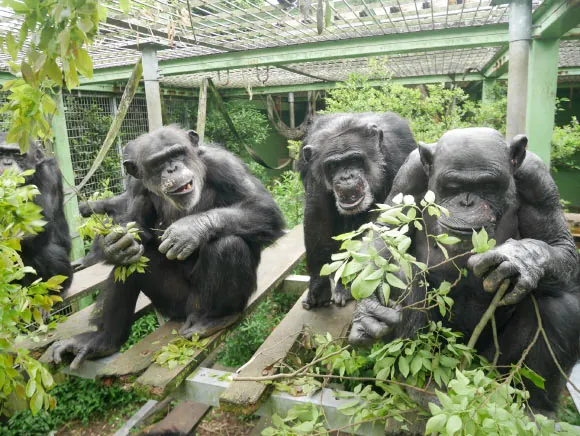
Breakthrough Study Reveals: Chimpanzees Exhibit Contagious Urination Behavior!
2025-01-21
Author: Li
Groundbreaking Discovery
In a groundbreaking discovery that sheds light on the social behaviors of chimpanzees, researchers have found that these remarkable primates experience "contagious urination" similar to humans. This fascinating phenomenon was detailed in a recent study published in the journal *Current Biology*, where scientists conducted extensive observations of 20 captive chimpanzees at the Kumamoto Sanctuary in Japan, logging over 600 hours of behavior.
Traditionally Understood Behavior
Traditionally, the decision to urinate has been understood mainly through physiological aspects. However, the social dynamics involved in this common bodily function have often gone unexamined. Researchers, led by Ena Onishi from Kyoto University, noted that in humans, urinating in groups can reflect various social norms—a concept encapsulated in the Italian proverb, “Whoever doesn’t pee in company is either a thief or a spy.” Interestingly, in Japanese culture, the act is colloquially referred to as “Tsureshon,” emphasizing its social dimension.
Key Findings of the Study
Through meticulous observation, the researchers documented 1,328 urination events and discovered that chimpanzees tended to urinate in response to one another, particularly when they were in close proximity. Unlike human behaviors, which may be influenced by social closeness, this study revealed that lower-ranking chimpanzees were more likely to follow the urination patterns of higher-ranking individuals, signifying a complex social hierarchy at play.
Surprising Insights
Dr. Onishi expressed surprise at the influence of dominance ranks on urination patterns, stating, “We initially expected any social influences to mirror those seen in yawning; however, our findings indicate that social rank holds sway over this behavior.” This unexpected revelation opens up a plethora of questions regarding the underlying social functions of such behavior. Could it signify hidden leadership, reinforce social bonds, or reflect an attention bias among lower-echelon chimps?
Implications of the Research
With the implications of this research stretching beyond mere urination habits, it highlights the rich tapestry of social interactions within primate communities. Understanding such behaviors not only illuminates the nature of chimpanzees but can also draw parallels to human social dynamics.
Future Research Directions
As scientists continue to explore the interconnectedness of physiological actions and social influences, this study invites us to reconsider the depth of animal behaviors that resemble ours, further emphasizing the evolutionary ties we share with our closest animal relatives.
Conclusion
Could this research revolutionize our understanding of animal behavior and social dynamics? What other unnoticed behaviors might emerge from ongoing studies? The animal kingdom continues to surprise us with its complexities and the secrets it has yet to unveil!




 Brasil (PT)
Brasil (PT)
 Canada (EN)
Canada (EN)
 Chile (ES)
Chile (ES)
 Česko (CS)
Česko (CS)
 대한민국 (KO)
대한민국 (KO)
 España (ES)
España (ES)
 France (FR)
France (FR)
 Hong Kong (EN)
Hong Kong (EN)
 Italia (IT)
Italia (IT)
 日本 (JA)
日本 (JA)
 Magyarország (HU)
Magyarország (HU)
 Norge (NO)
Norge (NO)
 Polska (PL)
Polska (PL)
 Schweiz (DE)
Schweiz (DE)
 Singapore (EN)
Singapore (EN)
 Sverige (SV)
Sverige (SV)
 Suomi (FI)
Suomi (FI)
 Türkiye (TR)
Türkiye (TR)
 الإمارات العربية المتحدة (AR)
الإمارات العربية المتحدة (AR)